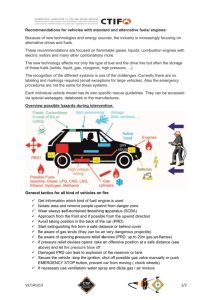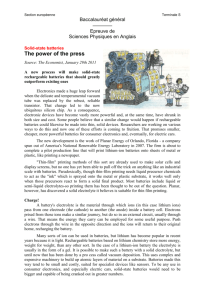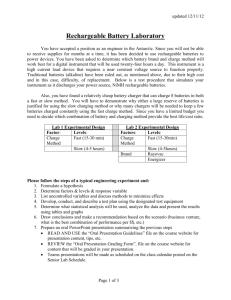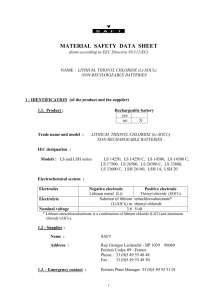Solid-State Battery - University of Colorado Boulder
advertisement
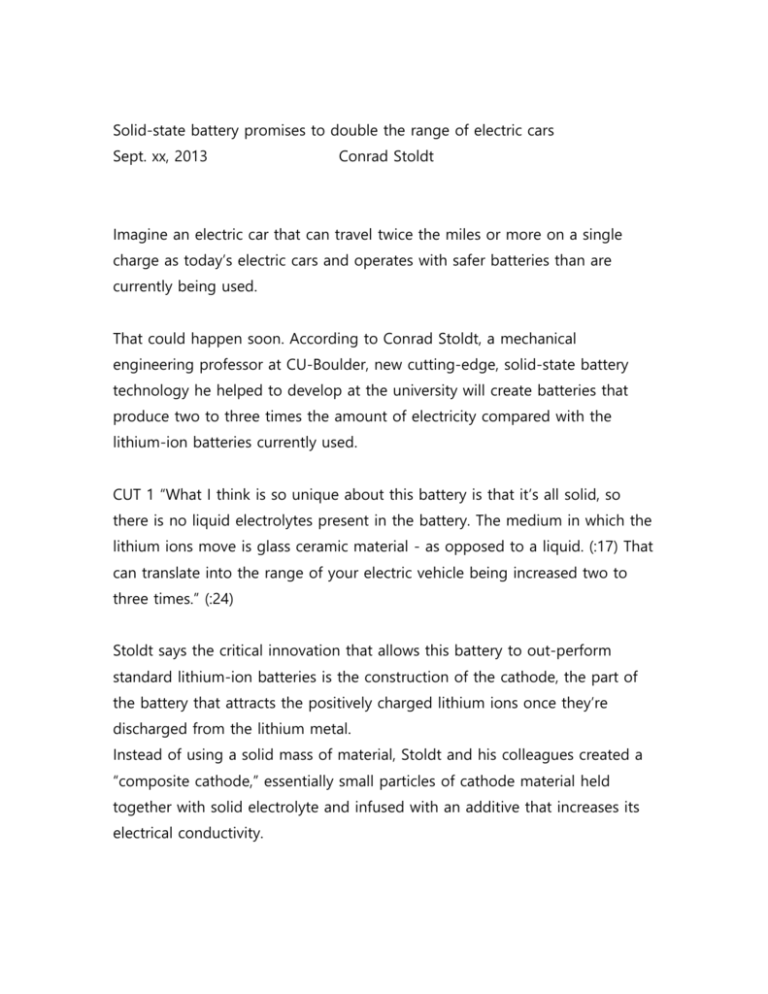
Solid-state battery promises to double the range of electric cars Sept. xx, 2013 Conrad Stoldt Imagine an electric car that can travel twice the miles or more on a single charge as today’s electric cars and operates with safer batteries than are currently being used. That could happen soon. According to Conrad Stoldt, a mechanical engineering professor at CU-Boulder, new cutting-edge, solid-state battery technology he helped to develop at the university will create batteries that produce two to three times the amount of electricity compared with the lithium-ion batteries currently used. CUT 1 “What I think is so unique about this battery is that it’s all solid, so there is no liquid electrolytes present in the battery. The medium in which the lithium ions move is glass ceramic material - as opposed to a liquid. (:17) That can translate into the range of your electric vehicle being increased two to three times.” (:24) Stoldt says the critical innovation that allows this battery to out-perform standard lithium-ion batteries is the construction of the cathode, the part of the battery that attracts the positively charged lithium ions once they’re discharged from the lithium metal. Instead of using a solid mass of material, Stoldt and his colleagues created a “composite cathode,” essentially small particles of cathode material held together with solid electrolyte and infused with an additive that increases its electrical conductivity. CUT 2 “What makes it unique is our development of a new electrode material. And this new electrode material has capacities that are very high, like on the order of probably eight to 10 times conventional to state-of-the-art cathodes being used in liquid electrolytes.” (:21) The rechargeable batteries currently in use generate electricity when lithium ions move back and forth between electrodes in a liquid electrolyte solution. But lithium metal is highly reactive and when combined with a liquid electrolyte, is extremely hazardous because it increases the chance of a thermal runaway reaction that can result in a fire or an explosion. CUT “Basically the battery internally shorts. That causes a rapid temperature rise within the battery. That temperature rise causes the electrolyte to boil and then you have this pressure build up and then once that outer protective layer cracks or breaks, then you have this hot solvent being emitted which then catches fire.” (:24) But the new design, says Stoldt, doesn’t have the same safety concerns. CUT 4 “These all-solid batteries are primarily composed of nonvolatile materials so in principle they can survive impacts; they can survive thermal runaway, which is the main failure mechanism for liquid lithium-ion cells.” (:19) And since they are safer they are also lighter than conventional batteries, says Stoldt, because the batteries would not need to have heavy protective layers wrapped around them to contain a potential meltdown. Lighter batteries translate into longer battery life on the road. CUT 5 “I think if we’re successful in developing a prototype that can deliver at least two times the state-of-the-art and energy density that would certainly be revolutionary.” (:12) Stoldt will get a chance to put this technology to the test. CU’s Technology Transfer Office has completed an agreement with Solid Power LLC—a CUBoulder spinout company founded by Stoldt and Se-Hee Lee, an associate professor of mechanical engineering at CU-Boulder—for the development and commercialization of the battery. -CU-



